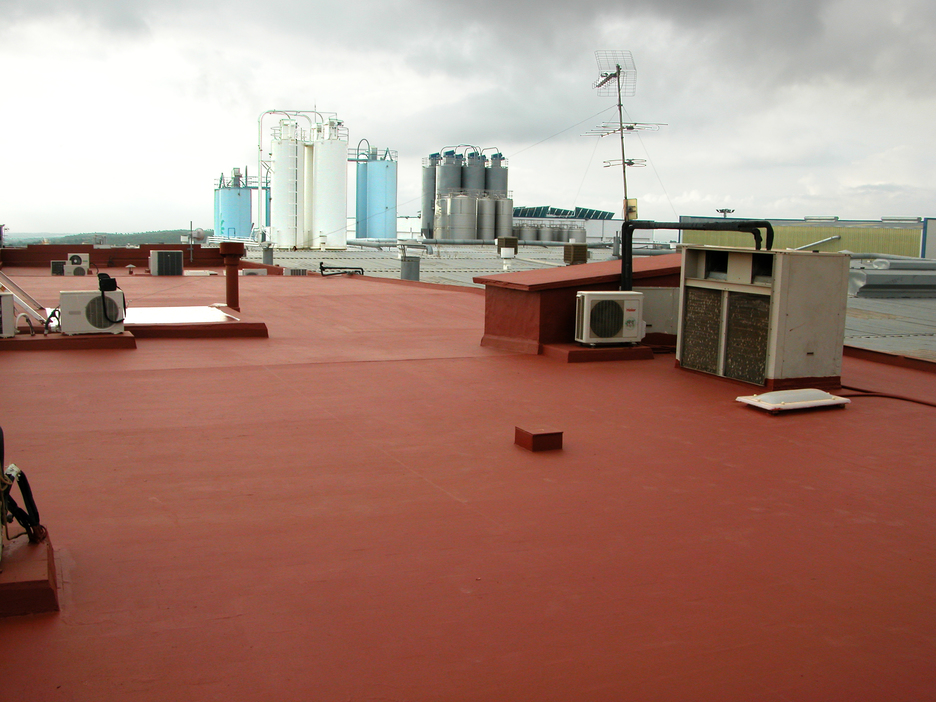Techniques for waterproofing terraces and roofs
Before waterproofing a terrace, roof or walkable surface with limited access, the first thing to do is choose the most appropriate technique. There are various different methods, which you can also combine, such as special paint for waterproofing, with asphalt fabric (I would change it for fibreglass because the paint won’t work with asphalt fabric), elastic rubber sheets or liquid polyurethane membranes, among other options.
However, at Pinturas Montó we will show you in detail why choosing a special paint for waterproofing terraces, such as TEJAMON TOP COVER, is one of the best options for achieving optimal results.

Step-by-step waterproofing of terraces with TEJAMONT TOP COVER
Before we look at its different applications, let's take a closer look at the characteristics of this photoreticulable elastic waterproofing.
Fundamental characteristics and properties
It is a continuous, anti-cracking, microporous and washable product that is stable at extreme temperatures, which can vary from -20ºC to 60ºC. TEJAMONT TOP COVER also complies with watertightness standards, absorbs cracks of up to 2 mm, offers great adhesion, is permeable to water vapour and has no visible aging defects.
Main uses of waterproofing
It is a perfect product for outdoor use on brick, Catalan bricks, cement mortar, asphalt fabric or protected polyurethane. It is also available in a variety of colours, such as white, red, green, grey and the very attractive and fashionable tile colour.

How do you prepare a terrace or roof for waterproofing?
Just as we told you that TEJAMONT TOP COVER is an ideal product for summer applications, today we are going to show you how to prepare your terrace or roof for waterproofing:
- On new surfaces: if applying on cement mortar, it is important to allow at least 30 days for it to set completely, and also to clean it to remove any other products. On asphalt and porous brick, you should test adhesion beforehand.
- On old surfaces: first of all, old and deteriorated paint should be removed, glossy surfaces should be made matt to ensure good adhesion, the solidity and adhesion of the paint should be checked, and the surface should be inspected to ensure that it is completely dry.
Tips for product application
When waterproofing terraces and roofs with TEJAMON TOP COVER, it is important to follow the recommendations below:
- Do not apply at temperatures higher than 35ºC or lower than 5ºC, as it could freeze.
- Avoid applying the product when there is a risk of imminent rain, and wait until the substrate is completely dry.
- It is essential to sanitise the entire surface, removing any kind of dirt or mould by washing it with clean water.
- For guaranteed protection, the use of mesh is essential.
- We recommended using WATERPROOFING PRIMER, a rough textured primer that acts as an adhesion bridge for waterproofing terraces and roofs.
- It can be applied with various methods, including brush, roller, airless spray gun, air mix spray gun, air spray gun and low-pressure turbo.
- The product takes between 4 and 6 hours to dry, and you will need to wait 24 hours before repainting.
General considerations before waterproofing a terrace
In addition to advice on the use of products such as TEJAMON TOP COVER, there are a number of general considerations to take into account before waterproofing a terrace or roof. You will need to check that the drains allow suitable drainage, to remove any water that falls on the surface, which can be large quantities in the middle of winter. You should also pay attention to the gratings, corners or expansion joints, sealing them if they have deteriorated.

Additionally, you need to check that the surface has enough of a slope to enable water drainage, as it is flat terraces and roofs that cause the most problems. Finally, you should also pay attention to areas where standing water or damp has existed for some time, making sure it dries properly before you start waterproofing.
But if you still have any queries, please contact us and our Customer Service team will be happy to help!


